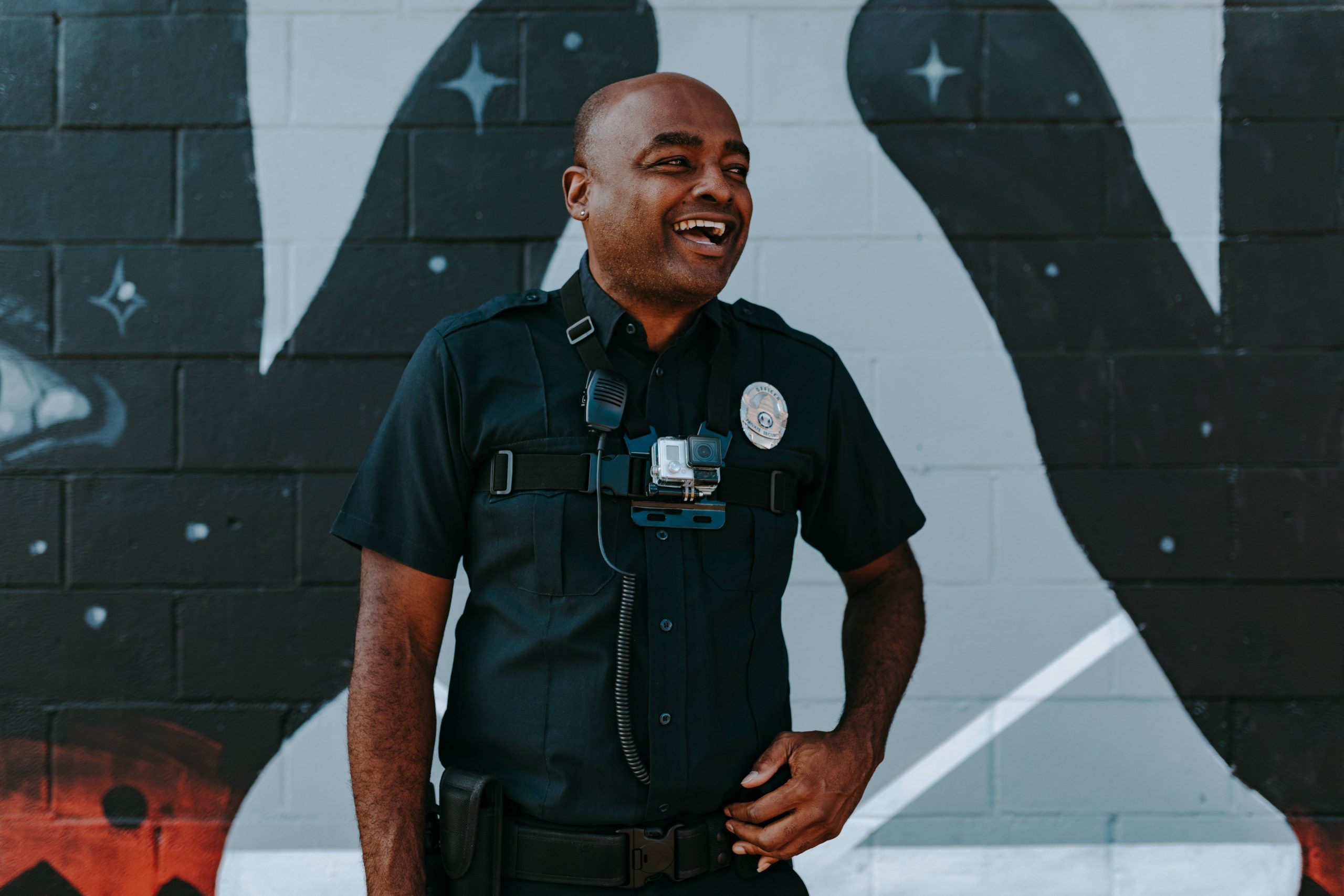What is Survival, Evasion, Resistance, and Escape (SERE) Methodology and How it Can Help Law Enforcement
Law enforcement agencies across the country are facing a crisis of public trust. Recent studies show that only 48% of Americans have a great deal of trust in the police, down significantly from 58% in 2014. While challenging, rebuilding community trust and engagement is critical for effective and just policing. Advances in police training, accountability measures, and innovative technology solutions are beginning to move the needle, but more work remains. One methodology that shows promise for improving police-community relations is Survival, Evasion, Resistance, and Escape (SERE) training.
The Current State of Law Enforcement Trust
Public trust in the police has declined over the past decade, fueled by high-profile incidents of police brutality and racial bias. A 2022 Pew Research study found that only 48% of U.S. adults say they have a great deal or quite a lot of confidence in police to act in the public’s best interests. This reflects a 10 percentage point drop from 2013, when 58% expressed this level of confidence. Further segmentation by race reveals even lower trust among Black and Hispanic Americans, at only 27% and 37% confidence respectively.
Driving this erosion of trust are shifting attitudes on issues of police violence, accountability, and fairness. 57% of Americans believe police more commonly use excessive force on Black suspects compared to White ones. And 65% say the police do only a fair or poor job of consistently holding officers accountable for misconduct. Without addressing this crisis of confidence, law enforcement agencies will continue to struggle with lower cooperation from communities and weakened legitimacy. Rebuilding engagement through training, accountability, and technology will be critical.
The Importance of Community Engagement
A report by the International Association of Chiefs of Police (IACP) emphasizes the need to prioritize community engagement and trust-building. When departments focus on community policing strategies, connecting with residents to understand local needs, studies show improved perceptions of police legitimacy and fairness. For example, the California Police department saw a 12% increase in positive community sentiment after implementing more foot patrols and community events.
Other successful engagement initiatives include LGBTQ outreach programs, civilian police academies, youth athletic leagues, and multilingual citizen advisory councils. Technology platforms have also emerged to facilitate community surveys, localized feedback, and transparency around policing data and department policies. By strengthening communication channels and incorporating community voices, the police can shift their role from detached authority figures to collaborative partners invested in public safety.
Advancements in Police Training and Accountability
In response to deficient training and oversight exposed by recent high-profile incidents of excessive force, many departments are reforming their programs to improve police-community interactions. Per IACP recommendations, training is expanding beyond tactical skills to emphasize de-escalation, bias awareness, mental health crisis response, and constructive community engagement.
For example, all Austin police officers now receive crisis intervention training to peacefully handle mental health emergencies without use of force. Early analysis shows a 6% drop in violent interactions following this program. And new Hawaii legislation requires all officers to undergo annual bias and racism awareness training, resulting in improved community relations per department surveys.
Beyond training, police accountability is increasing through measures like body cameras, civilian oversight committees, and anonymous misconduct reporting systems. Studies show Body-Word Cameras reduce use-of-force incidents https://shorturl.at/nuQR3 when implemented properly. And community oversight boards add transparency while incorporating citizen perspectives on policing strategies.
Technology in Policing
Law enforcement agencies are rapidly adopting new technologies to strengthen community ties, improve accountability, and reduce bias incidents. For example, AI and data analytics tools can identify high-risk areas to optimize police patrol routes and resource allocation based on actual crime rates rather than racial profiling. Predictive algorithms also show promise for identifying officers prone to misconduct so they can receive early intervention.
The Grafton, Wisconsin police department has seen dramatic improvements in police-community relations since implementing the Officer Survey platform. This innovative engagement tool enables police departments to quickly conduct surveys, polls, and outreach to strengthen connections with local residents.
Since rolling out Officer Survey 3 years ago, the Grafton Police Department has seen officer approval ratings skyrocket. On average, officers now receive satisfaction scores of 97% on community surveys.
Even more importantly, overall positive sentiment toward the police department among Grafton citizens has reached 98%. This reflects a major improvement in community relations and perceptions of police legitimacy.
The Grafton police credit several key factors for driving these gains through the Officer Survey program:
- Increased Communication: Officer Survey provides a direct channel for citizens to voice their concerns, interactions, and ideas. With this improved two-way communication, the police gain valuable insights to guide reforms.
- Personalized Feedback: The platform’s unique Interaction Surveys allow residents to leave feedback on individual officers. This enables personalized coaching and growth opportunities for officers.
- Community Outreach: Officer Survey expanded the department’s community outreach capabilities through localized surveys and polls. Proactively engaging subgroups like youth, minorities, and small businesses improved relations.
- Sentiment Tracking: Powerful sentiment analytics tools help the department identify issues early and track progress over time. Targeted reforms are now data-driven and results-focused.
- Accountability & Transparency: Publicizing Officer Survey implementation, results, and reform efforts built further community goodwill by showcasing the department’s commitment to accountability.
By leveraging innovative technology to focus on community feedback, the Grafton Police Department transformed officer-citizen relations. Their success demonstrates how police departments can turn around negative perceptions through solutions like Officer Survey. The program has become a model for modern, engaged policing practices nationwide.
Introducing Officer Survey
Officer Survey is an online community engagement and feedback platform designed specifically for police departments. Departments can use the platform to quickly conduct polls, surveys, and other outreach across the broader community, specialized focus groups, and their own employees. The goal is to collect granular, multidimensional feedback data to identify issues, understand needs, and guide policy based on evidence.
For community members, Officer Survey provides a direct channel to voice their interactions, perceptions, concerns, and ideas. Departments gain the unfiltered insights needed to reshape training programs, accountability procedures, and community relations initiatives. Advanced analytics track engagement levels, sentiment, trends over time, and feedback disparities among demographic groups – enabling data-driven reforms. Officer Survey focuses not just on whether an interaction was positive, but on understanding the more complex ‘how’ and ‘why’ behind community perceptions.
Impact of Officer Survey on Community Relations
This engaged, feedback-driven approach can profoundly impact police-community relations. Consider a department struggling with complaints around unnecessary stops of teenage pedestrians. Officer Survey facilitates localized surveys asking youth and parents about their recent interactions. Data reveals a pattern of disrespectful language by a small subset of officers. Additional polls help finalize new protocol requiring respectful explanation of all stops. Publicized accountability measures also reassure the community.
With concrete data on problems and solutions, departments can implement reforms confidently while showcasing transparency. Anecdotal success stories from community members on social media build further goodwill. Within 6 months of launching Officer Survey, the fictional department above reduced pedestrian stop complaints by 75% and improved community perceptions. Other scenarios where rich, structured community feedback benefits policing range from evaluating diversity training programs to resolving neighborhood noise complaints.
Individual Officer Feedback Through Interaction Surveys
A particularly innovative Officer Survey feature is Interaction Surveys – one-click mini-surveys community members can submit following individual officer encounters. The surveys capture sentiment, ratings, and open feedback tied to the specific officer for personalized coaching. Response automation and sentiment analysis ensure commanders can review key themes and trends to guide training across the team. For the vast majority of officers, it reinforces good practices.
In experiments with the Officer Survey app, one officer discovered he had a tendency to interrupt community members and speak in an aggressive tone. Thanks to anonymous feedback on his Interaction Surveys, he increased self-awareness and corrected the habit through roleplay training. This improved his survey ratings dramatically over a 2-month period. Without ongoing, personalized data, such growth opportunities would be missed. Automated reporting also enables commanders to track department-wide progress over time.
Conclusion
Rebuilding public trust and engagement with law enforcement remains a complex challenge requiring commitment across policies, training, accountability, and community relations. However, innovative methodologies and technologies are proving valuable in driving real progress. The SERE model offers an interesting framework for thinking about issues of survival, evasion, resistance, and escape from historic problems in policing. And platforms like Officer Survey leverage the power of data and community feedback to enable a more collaborative model of policing tailored to each community’s needs. While the road ahead remains long, leveraging insights from citizens, social science research, and technology gives reason for optimism. With persistence, 21st century law enforcement agencies can become anchors of justice, safety, and trust once more. Click here to get started today.








